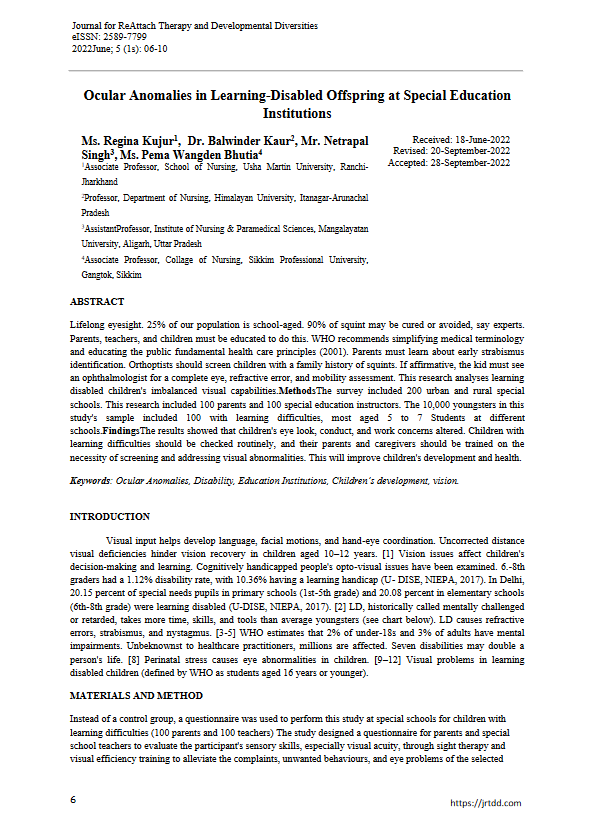Ocular Anomalies in Learning-Disabled Offspring at Special Education Institutions
Main Article Content
Abstract
Lifelong eyesight. 25% of our population is school-aged. 90% of squint may be cured or avoided, say experts. Parents, teachers, and children must be educated to do this. WHO recommends simplifying medical terminology and educating the public fundamental health care principles (2001). Parents must learn about early strabismus identification. Orthoptists should screen children with a family history of squints. If affirmative, the kid must see an ophthalmologist for a complete eye, refractive error, and mobility assessment. This research analyses learning disabled children's imbalanced visual capabilities.
MethodsThe survey included 200 urban and rural special schools. This research included 100 parents and 100 special education instructors. The 10,000 youngsters in this study's sample included 100 with learning difficulties, most aged 5 to 7 Students at different schools.
FindingsThe results showed that children's eye look, conduct, and work concerns altered. Children with learning difficulties should be checked routinely, and their parents and caregivers should be trained on the necessity of screening and addressing visual abnormalities. This will improve children's development and health.

